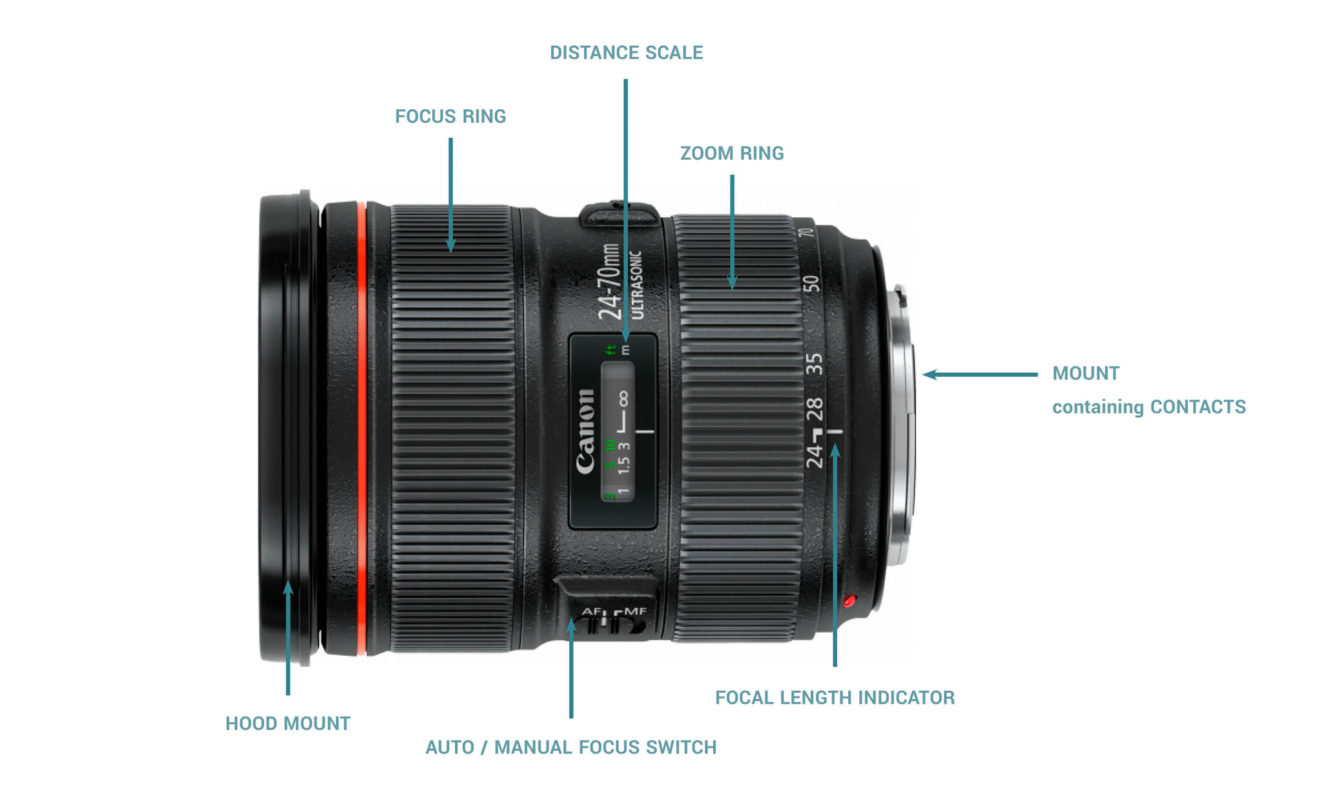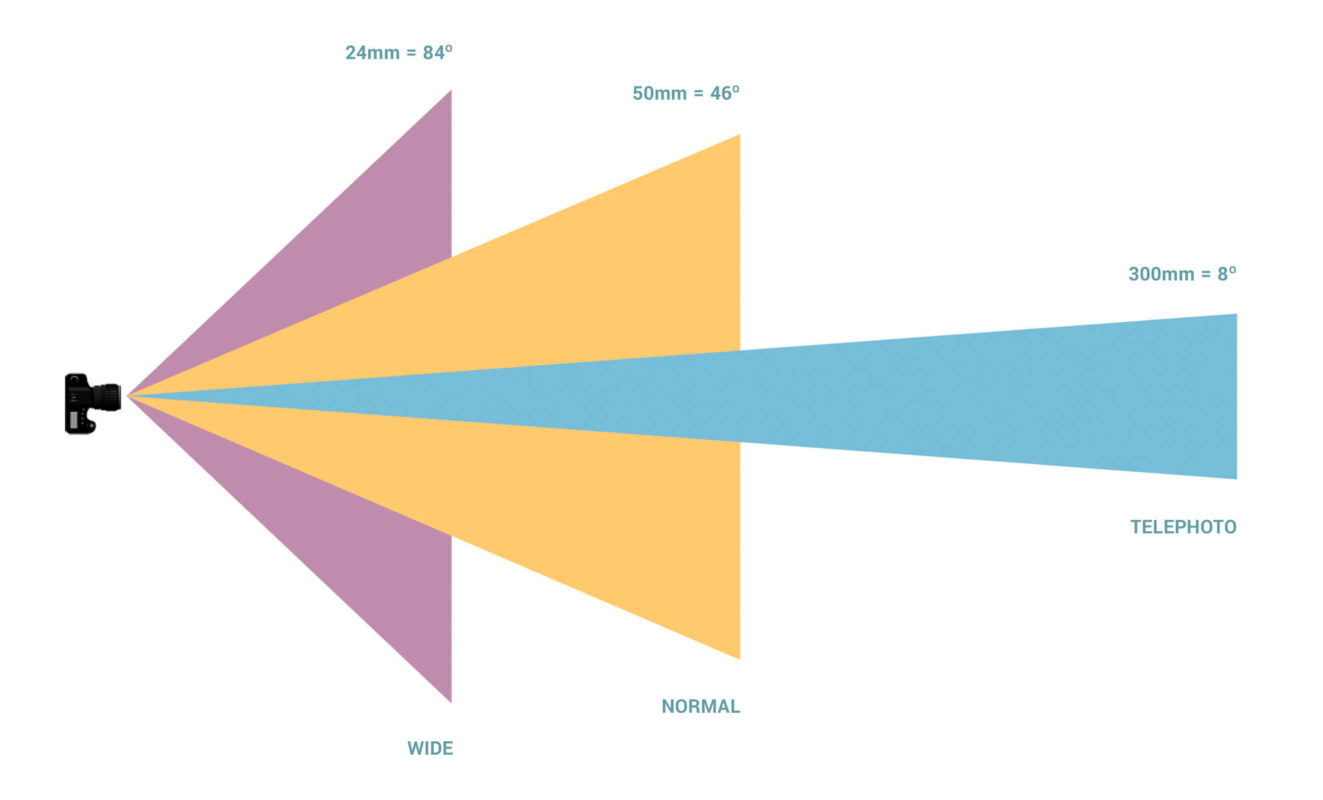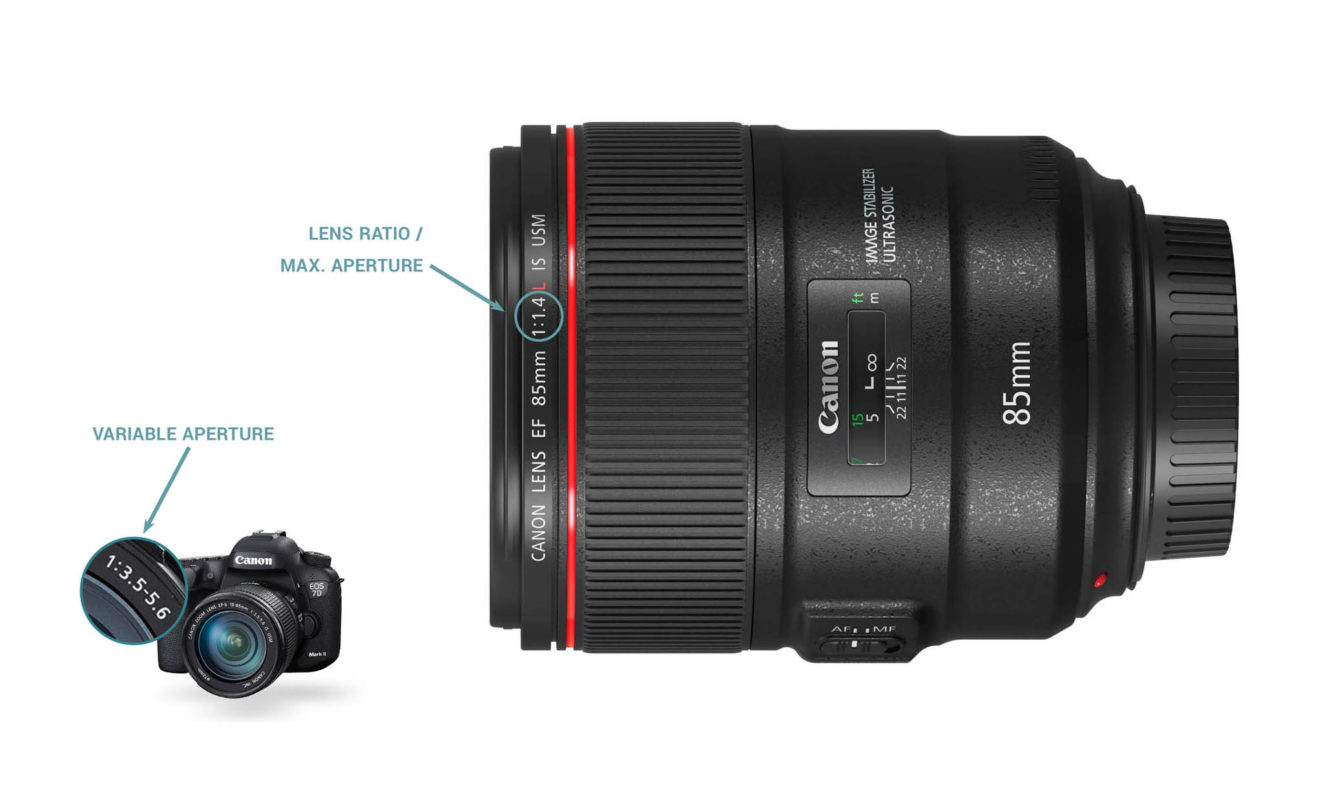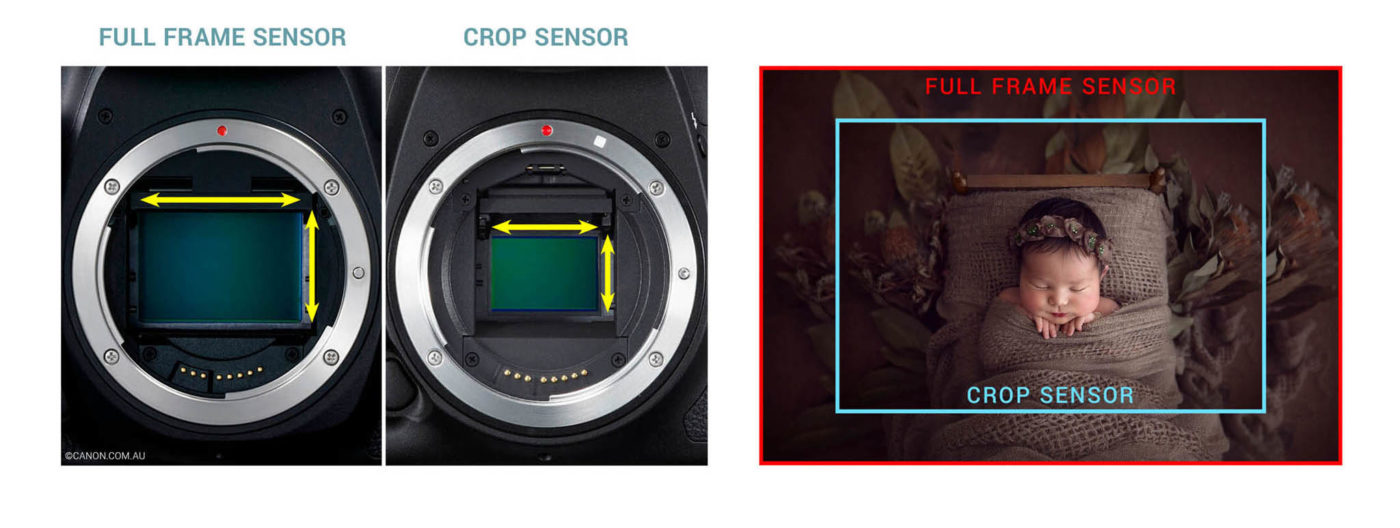As a photographer, a practical understanding of camera lenses is essential, whether choosing a new lens to purchase or simply picking the best option from your existing kit. Once you understand the attributes which make up a lens, you’ll be a step closer to achieving your vision, with the right tools. In this article, we’ll take you through some of those essential terms which will help you to both choose and best use your lens.

FOCAL LENGTH
Focal Length describes the angle of view and magnification of the subject or scene.
The lower the focal length number (eg. 24mm), the wider the angle of view and lesser the magnification of the subject or scene.
The higher the focal length number (eg. 300mm), the narrower the angle of view and greater the magnification of the subject or scene.
For reference, the human eye sees an angle of view similar to 50mm focal length.

An understanding of focal length, along with angle of capture, are crucial to perfecting your portraiture. In her Getting It Right In Camera tutorial, Kelly Brown demonstrates capturing well composed and flattering newborn portraits in detail, along with exposure control, composition, and more.
LENS RATIO / MAXIMUM APERTURE
The lens ratio or maximum aperture is often shown on the top / front of your lens, alongside the focal length. This number is an indication of the maximum amount of light that a lens will allow in.

The lower the number, the larger the aperture (opening), thus allowing more light in. Lenses with larger maximum apertures are popular for low-light situations such as available light portraiture and documentary photography. Note, they tend to fall into the higher price bracket.
A larger aperture also offers a shallower depth of field (area in focus), which, combined with focal length choice, helps to isolate the subject.
PRIME LENSES
Prime lenses have a fixed focal length (eg. 50mm). They are often more compact and lighter in weight than zoom lenses of similar quality. They generally have a larger maximum aperture, often in the f1.2 to f2.8 range, compared with many zoom lenses. This can be advantageous in low light situations and when a very shallow depth of field is desired. The downside to a fixed focal length is the need to physically relocate the position you shoot from to change your field of view.
ZOOM LENSES
Zoom lenses offer a variable focal length (eg. 24 – 70mm). They are highly versatile, offering the ability to capture your subject / scene at wide angle of view through to a more magnified view, without the need to change lens. This can be convenient for travel or when working in a situation where changing lenses is not practical due to time constraints or environmental factors. A potential downside to zoom lenses, particularly in the lower price bracket, is that their maximum aperture is usually smaller than that offered by primes or professional series zooms. This can be limiting, particularly if you will regularly shoot in low light situations.

FULL FRAME vs CROP-SENSOR CAMERAS
YOUR CAMERA IMPACTS LENS CHOICE
When choosing a lens it’s important to understand that your type of camera body will affect the angle of view of your lens.

FULL FRAME
In a full-frame digital SLR camera, the imaging sensor is the equivalent size of traditional 35mm film. Full frame sensors are found in professional series DSLR cameras.
CROP SENSOR
Crop sensors, including Canon’s APS-C range, are commonly found in entry to mid-level DSLR cameras. As the imaging sensor is physically smaller than a full-frame sensor, it CROPS so that only part of the image which is transmitted through the lens is captured. Check your camera specifications for the multiplication factor specific to your model.
EXAMPLE
Canon EOS 80D is a crop-sensor body with a “crop factor” of 1.6
A 50mm lens on a FULL FRAME camera, gives us an effective 50mm focal length. The same 50mm lens placed on a CROP-SENSOR camera with a 1.6x crop factor, captures an effective 80mm focal length. [ 50mm x 1.6 = 80mm ] as illustrated.
STANDARD LENSES
Standard focal length lenses are commonly considered to fall within the 35mm – 70mm range. They replicate close to what the human eye can see. They have minimal distortion compared with a wider angle lens and, therefore, are more complimentary to a portrait subject.
Unless you have a specific purpose, a standard focal length lens is a common choice for your first/go-to lens. Many full-frame DSLR camera kits include a standard lens such as a 50mm prime, or standard zoom such as a 35 – 70mm or slightly wider 24 – 70mm.
*Note with a crop sensor DSLR kit you commonly see the likes of a 35mm lens (56mm effective focal length); or an 18 – 35mm (29 – 56mm effective focal length).
FREE LENS GUIDE WORKSHOP
Kelly, has recorded a FREE Lens Guide workshop, with the help of the Canon Collective, to help you further your understanding of camera lenses.
It’s packed with information and practical demonstrations of various lenses, along with a discussion about the best use for each of the lenses. We strongly encourage you to make time to watch it.
*equipment images in this post are supplied by Canon media kit


Denise says
I have a Canon 70 to 105 lens which has already been in the shop with Cannon. It still has the lens creep. I’ve tried everything I can to fix it so that I can use it. I don’t have the money to buy another lens or I would replace it in a second do you have any recommendations as to what I can do to still be able to use this lens. Cannon has washed their hands of the lens and won’t fix it.